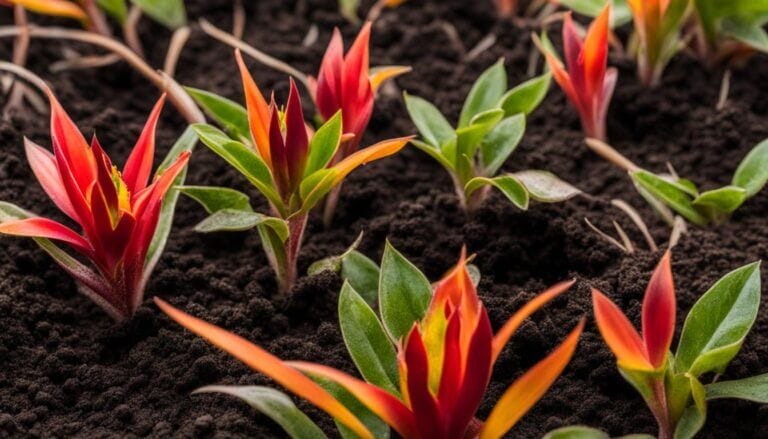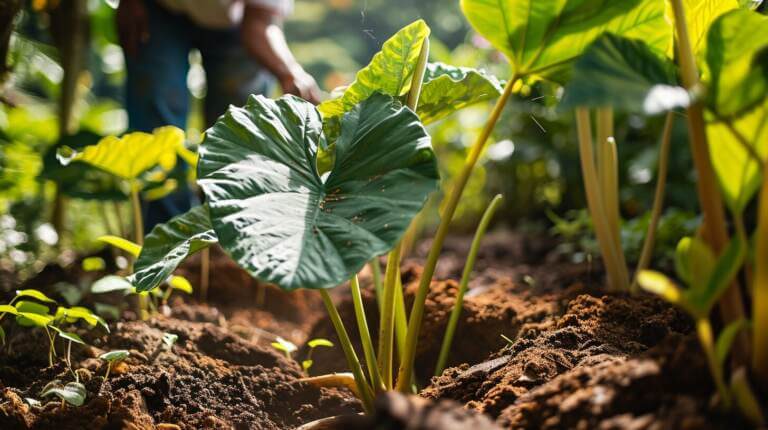Trailing plants are essential for creating beautiful hanging baskets. They add a cascading and romantic effect to any display. When choosing trailing plants for your hanging baskets, it’s important to consider your local climate and the plants’ requirements for sunlight and shade.
Some popular trailing plants for hanging baskets include the Black-eyed Susan vine, Ivy, Lobelia, Strawberries, Creeping Jenny, Tomatoes, Tradescantia zebrina, Fuchsias, Trailing geraniums, Spider plant, Petunias, and Burro’s tail succulent. These plants provide lush foliage, attractive flowers, and a variety of colors. They are easy to care for and can thrive in both indoor and outdoor environments. With the right selection of trailing plants, you can create stunning hanging baskets that will enhance the beauty of your space throughout the year.
Key Takeaways:
- Trailing plants are essential for creating beautiful hanging baskets.
- Consider your local climate and the plants’ requirements for sunlight and shade when choosing trailing plants.
- Popular trailing plants for hanging baskets include the Black-eyed Susan vine, Ivy, Lobelia, Strawberries, Creeping Jenny, Tomatoes, Tradescantia zebrina, Fuchsias, Trailing geraniums, Spider plant, Petunias, and Burro’s tail succulent.
- These plants provide lush foliage, attractive flowers, and a variety of colors.
- With the right selection of trailing plants, you can create stunning hanging baskets that will enhance the beauty of your space throughout the year.
Selecting the Best Trailing Plants for Hanging Baskets
Choosing the right trailing plants for your hanging baskets is essential to create stunning displays that will enhance the beauty of your space. When selecting the best trailing plants, consider your local climate and the specific requirements of the plants. Check the USDA plant hardiness zone for your area to determine which plants will thrive in your region. Some plants may be grown as annuals in colder climates or brought indoors during the winter months.
In addition to climate considerations, it’s important to think about the sunlight requirements of the plants. Some trailing plants prefer full sun, while others thrive in partial shade. By understanding the sunlight needs of each plant, you can ensure that your hanging basket gets the right amount of light for optimal growth.
There are also several evergreen varieties of trailing plants that can be used for winter hanging baskets. These varieties add greenery and beauty to your space even during the colder months. Some popular trailing plants for hanging baskets include the Black-eyed Susan vine, Ivy, Lobelia, Strawberries, Creeping Jenny, Tomatoes, Tradescantia zebrina, Fuchsias, Trailing geraniums, Spider plant, Petunias, and Burro’s tail succulent. With this wide variety of options, you can choose plants that offer different colors, foliage textures, and flowering patterns to create a stunning and vibrant hanging basket display.
| Trailing Plant | Light Requirements | Hardiness Zone |
|---|---|---|
| Black-eyed Susan vine | Full sun to partial shade | 3-11 |
| Ivy | Shade to partial shade | 4-8 |
| Lobelia | Full sun to partial shade | 2-11 |
| Strawberries | Full sun to partial shade | 3-10 |
| Creeping Jenny | Full sun to partial shade | 2-9 |
| Tomatoes | Full sun | 3-14 |
| Tradescantia zebrina | Shade | 9-12 |
| Fuchsias | Partial shade to full shade | 7-10 |
| Trailing geraniums | Full sun to partial shade | 3-10 |
| Spider plant | Partial shade | 9-11 |
| Petunias | Full sun | 3-11 |
| Burro’s tail | Full sun to partial shade | 9-11 |
With careful consideration of your local climate, sunlight requirements, and the wide variety of trailing plants available, you can select the best plants for your hanging baskets. Whether you’re looking to create a vibrant summer display or a beautiful winter hanging basket, these trailing plants will add color, texture, and beauty to any space.
Care Tips for Trailing Plants in Hanging Baskets
When it comes to caring for trailing plants in hanging baskets, a few key tips can help ensure their health and vitality. First and foremost, consider the sunlight needs of your plants. Place your hanging baskets in an area that receives the appropriate amount of light for each specific plant, whether it requires full sun or partial shade.
Watering is another crucial aspect of care. Regularly check the moisture level of the soil in your hanging baskets, and water your plants accordingly. It’s important to strike a balance – while you want to keep the soil consistently moist, you should also allow it to partially dry out between waterings to prevent overwatering and root rot.
Pruning is essential for maintaining the shape and density of trailing plants. Trim any leggy growth and pinch off the ends to encourage bushier and more compact growth. This will enhance the overall appearance of your hanging baskets and keep the plants looking their best.
Lastly, fertilizing your trailing plants can provide them with the necessary nutrients for healthy growth. Research the specific fertilizer requirements of each plant, such as Tradescantia zebrina, Spider plant, Fuchsias, Trailing geraniums, Petunias, and Burro’s tail, and apply fertilizer according to their needs. Be cautious not to over-fertilize, as this can lead to excessive foliage growth at the expense of flowers.
FAQ
What are some popular trailing plants for hanging baskets?
Some popular trailing plants for hanging baskets include the Black-eyed Susan vine, Ivy, Lobelia, Strawberries, Creeping Jenny, Tomatoes, Tradescantia zebrina, Fuchsias, Trailing geraniums, Spider plant, Petunias, and Burro’s tail succulent.
How do I select the best trailing plants for my hanging baskets?
When selecting trailing plants for hanging baskets, consider your local climate and the plants’ requirements for sunlight and shade. Check your USDA plant hardiness zone to determine which plants will grow well in your area. Some plants may be grown as annuals in colder climates or brought indoors during the winter months.
How should I care for trailing plants in hanging baskets?
To care for trailing plants in hanging baskets, provide them with proper sunlight, water them regularly, prune the plants to maintain shape and density, and fertilize according to their specific needs. Research and understand the care requirements of each plant to ensure optimal growth and vitality.







